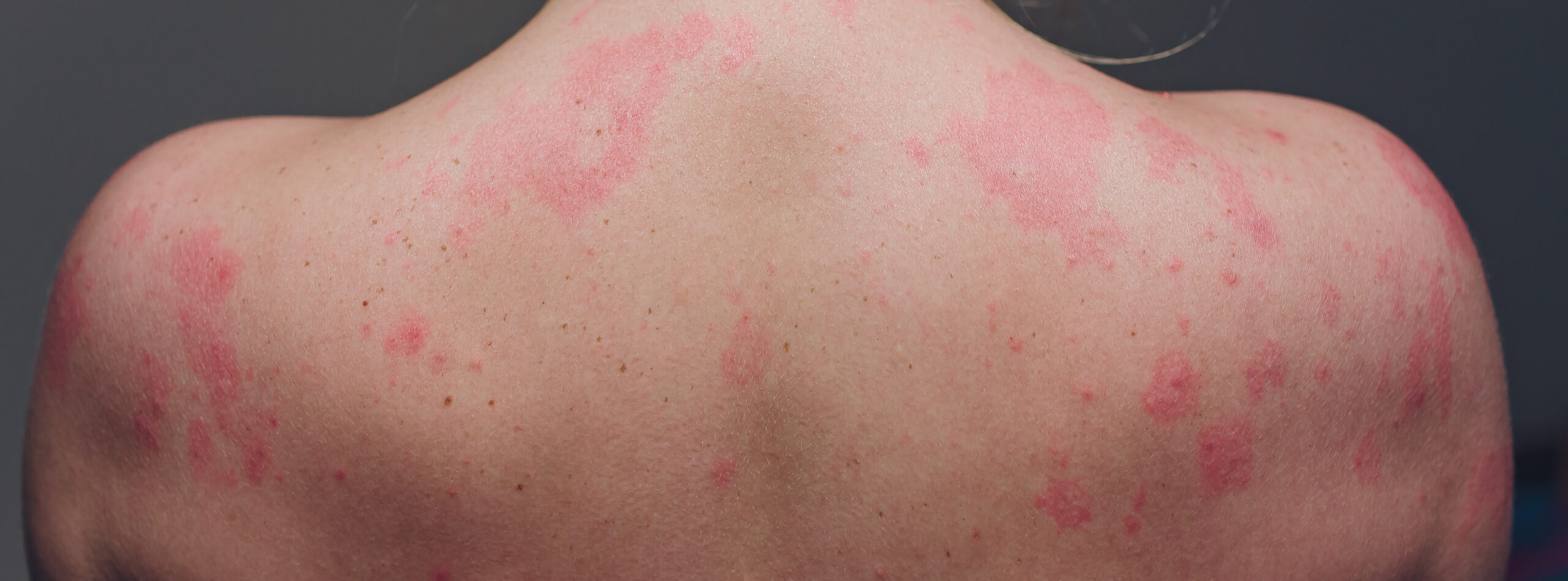
Skin Conditions That May Signal COVID-19
Our board-certified dermatologists at Genesis Dermatology in Jupiter have seen a number of unusual kinds of skin conditions in connection with COVID-19 since the beginning of the pandemic.
Sometimes these skin conditions are an early warning of a COVID-19 infection. Other times, our patients know they’re infected. These skin flare-ups are just one more of the odd symptoms connected with this unusual virus.
Some symptoms appear early in the course of infection, while others appear later.
One study published in the British Journal of Dermatology found a rash was the first symptom of COVID-19 for 17 percent of those who tested positive. It was found to be the only symptom for 21 percent of positive cases.
“It’s actually hard to think of another virus that causes so many different types of skin findings,” Esther Freeman, MD, PhD, and director of Global Heath Dermatology at Massachusetts General Hospital, told Very Well Health.
COVID toes
“COVID toes” is probably the best-known skin condition associated with COVID-19. The discoloration and lesions associated with it can also be seen less frequently on the fingers or other parts of the feet or hands. They appear to be linked with the body-wide inflammation seen with COVID-19 infection.
And while COVID toes can develop at any age, they are most often seen in children, teenagers, and young adults.
The condition may affect one or more toes (or fingers). It begins either as a purple discoloration, or as a bright red color that gradually turns purple. Some may also get blisters, a small amount of pus under the skin, painful raised bumps, or rough patches on the skin.
Sometimes the person doesn’t even know they have this condition until they notice the swelling and discoloration. Others may also experience swelling, itching, and pain, which can be treated by applying a hydrocortisone cream.
Those who have this condition may be reassured to know that, unlike in frostbite, which has similar symptoms, researchers have not found any underlying tissue damage in COVID toes that could lead to gangrene.
Many types of rashes
According to the American Academy of Dermatology (AAD), unlike with other diseases like measles and chickenpox, there is no single type of rash that signals a COVID-19 infection.
The various rashes that can accompany a coronavirus infection vary with the severity of the disease and the age of the patient. Some are more common than others, and include:
- widespread small red bumps or multiple flat red patches (maculopapular eruptions)
- hives (urticaria): red itchy rashes, usually accompanied by swelling
- bloodshot eyes (conjunctivitis)
- water blisters (vesicular eruptions), which often appear on the hands
- scaly papules and plaques (papulosquamous eruptions)
- red/blue lace-like pattern (livedo) involving tiny blood vessels on the skin
- bruise-like eruptions (retiform purpura)
- multisystem inflammatory syndrome in children (MIS-C), a rash accompanied by other severe symptoms that can also be seen in teenagers and young adults
- hair loss (telogen effluvium)
Longer-lasting symptoms
One of the many mysterious aspects of the coronavirus is the persistence of some symptoms weeks or months after recovery.
From lingering weakness and fatigue to brain fog and difficulty breathing, these “long-haul” or “long-COVID” patients’ symptoms were often dismissed at the beginning of the pandemic. Now they’re taken seriously, and numerous studies are underway to find the cause and search for treatment.
And researchers are now finding that certain skin conditions associated with the illness, especially COVID toes, can linger for months. Others seem to clear up within a few weeks.
Another puzzling aspect of the coronavirus is why some people become so critically ill and others remain totally asymptomatic. And we’re seeing this with the various skin conditions, as well. Some people have the rashes and other symptoms mentioned here, while others never develop them.
Nevertheless, it’s clear we’re far from being able to put the pandemic behind us. So it’s important to be vaccinated and to follow the CDC guidelines to prevent transmission.
And if you develop any type of rash or unusual skin condition, be sure to check with us or your primary care physician. If you think you’ve been exposed to the coronavirus, it’s important to get tested as soon as possible.

